Trailrunning shoes
.
- - 15 %
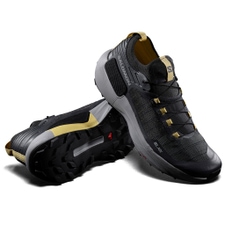 Genesis Running Shoes Quiet Shade / Ebony / Sun Men
Genesis Running Shoes Quiet Shade / Ebony / Sun Men MSRP 199,95 €169,95 €Available Sizes:EU | UK | US | CM7,5
MSRP 199,95 €169,95 €Available Sizes:EU | UK | US | CM7,5 - - 10 %
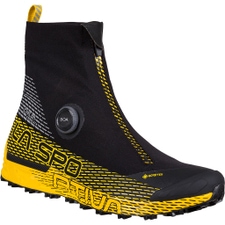 La SportivaCyklon Cross GTX Running Shoes Black / Yellow MenMSRP 249,95 €224,95 €Available Sizes:EU | UK | US | CM43,043,544,545,045,5
La SportivaCyklon Cross GTX Running Shoes Black / Yellow MenMSRP 249,95 €224,95 €Available Sizes:EU | UK | US | CM43,043,544,545,045,5 - - 13 %
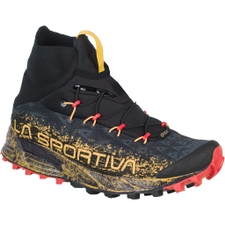 La SportivaUragano GTX Running Shoes Black / Yellow MenMSRP 229,95 €199,95 €Available Sizes:EU | UK | US | CM42,543,043,544,044,5
La SportivaUragano GTX Running Shoes Black / Yellow MenMSRP 229,95 €199,95 €Available Sizes:EU | UK | US | CM42,543,043,544,044,5
- - 13 %
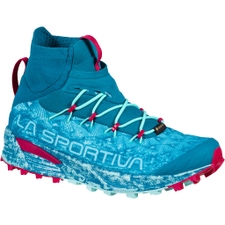 La SportivaUragano GTX Running Shoes Crystal / Cerise WomenMSRP 229,95 €199,95 €Available Sizes:EU | UK | US | CM38,039,039,540,040,5
La SportivaUragano GTX Running Shoes Crystal / Cerise WomenMSRP 229,95 €199,95 €Available Sizes:EU | UK | US | CM38,039,039,540,040,5
- - 36 %
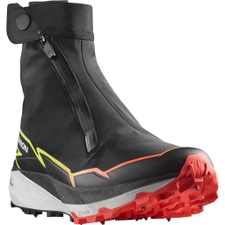 SalomonWinter Cross Spike Running Shoes Black / Fiery Coral / Safety Yellow MenMSRP 249,95 €159,95 €Available Sizes:EU | UK | US | CM11,012,013,5
SalomonWinter Cross Spike Running Shoes Black / Fiery Coral / Safety Yellow MenMSRP 249,95 €159,95 €Available Sizes:EU | UK | US | CM11,012,013,5 - - 25 %
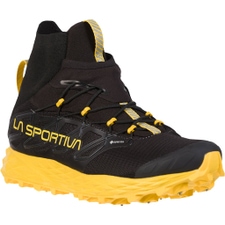 La SportivaBlizzard GTX Running Shoes Black / Yellow MenMSRP 239,95 €179,95 €Available Sizes:EU | UK | US | CM43,043,545,045,546,0
La SportivaBlizzard GTX Running Shoes Black / Yellow MenMSRP 239,95 €179,95 €Available Sizes:EU | UK | US | CM43,043,545,045,546,0
- - 10 %
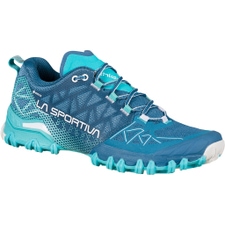 La SportivaBushido II GTX Running Shoes Atlantic / Aquarelle WomenMSRP 199,95 €179,95 €Available Sizes:EU | UK | US | CM38,539,039,5
La SportivaBushido II GTX Running Shoes Atlantic / Aquarelle WomenMSRP 199,95 €179,95 €Available Sizes:EU | UK | US | CM38,539,039,5
- - 10 %
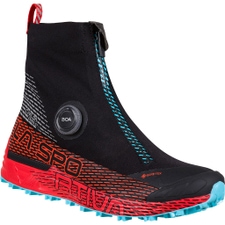 La SportivaCyklon Cross GTX Running Shoes Black / Hibiscus WomenMSRP 249,95 €224,95 €Available Sizes:EU | UK | US | CM38,539,039,540,541,0
La SportivaCyklon Cross GTX Running Shoes Black / Hibiscus WomenMSRP 249,95 €224,95 €Available Sizes:EU | UK | US | CM38,539,039,540,541,0 - - 21 %
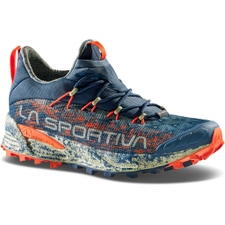 La SportivaTempesta GTX Running Shoes Tea / Cherry Tomato WomenMSRP 194,95 €154,95 €Available Sizes:EU | UK | US | CM38,539,040,040,541,0
La SportivaTempesta GTX Running Shoes Tea / Cherry Tomato WomenMSRP 194,95 €154,95 €Available Sizes:EU | UK | US | CM38,539,040,040,541,0
- - 25 %
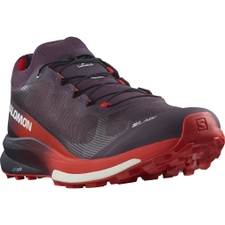 Ultra 3 v2 Running Shoes Plum Perfect / Fiery Red / White
Ultra 3 v2 Running Shoes Plum Perfect / Fiery Red / White MSRP 199,95 €149,95 €Available Sizes:EU | UK | US | CM5,05,56,06,57,0
MSRP 199,95 €149,95 €Available Sizes:EU | UK | US | CM5,05,56,06,57,0 - - 50 %
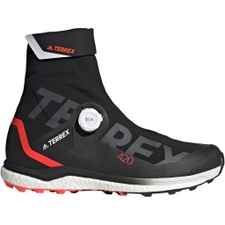 Adidas TerrexAgravic Tech Pro Running Shoes Core Black / Cloud White / Solar Red MenMSRP 249,95 €124,95 €Available Sizes:EU | UK | US | CM10,512,0
Adidas TerrexAgravic Tech Pro Running Shoes Core Black / Cloud White / Solar Red MenMSRP 249,95 €124,95 €Available Sizes:EU | UK | US | CM10,512,0 - - 23 %new
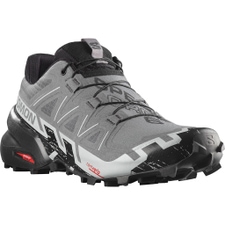 SalomonSpeedcross 6 Running Shoes Quiet Shade / Black / Pearl Blue MenMSRP 149,95 €114,95 €Available Sizes:EU | UK | US | CM8,010,010,5
SalomonSpeedcross 6 Running Shoes Quiet Shade / Black / Pearl Blue MenMSRP 149,95 €114,95 €Available Sizes:EU | UK | US | CM8,010,010,5 - - 20 %
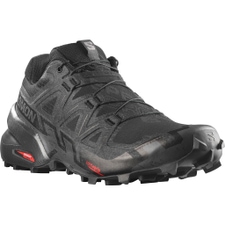 SalomonSpeedcross 6 Running Shoes Black / Phantom MenMSRP 149,95 €119,95 €Available Sizes:EU | UK | US | CM8,512,0
SalomonSpeedcross 6 Running Shoes Black / Phantom MenMSRP 149,95 €119,95 €Available Sizes:EU | UK | US | CM8,512,0 - - 24 %new
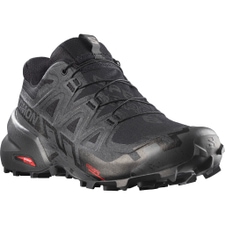 SalomonSpeedcross 6 GTX Running Shoes Black / Phantom MenMSRP 169,95 €129,95 €Available Sizes:EU | UK | US | CM8,09,09,510,010,5
SalomonSpeedcross 6 GTX Running Shoes Black / Phantom MenMSRP 169,95 €129,95 €Available Sizes:EU | UK | US | CM8,09,09,510,010,5
- - 33 %
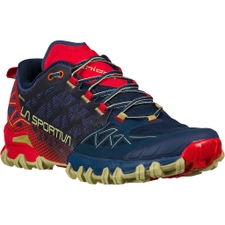 La SportivaBushido II GTX Running Shoes Night Blue / Tango Red MenMSRP 194,95 €129,95 €Available Sizes:EU | UK | US | CM39,0
La SportivaBushido II GTX Running Shoes Night Blue / Tango Red MenMSRP 194,95 €129,95 €Available Sizes:EU | UK | US | CM39,0
- - 10 %
 La SportivaBushido II Running Shoes Opal / Apple Green MenMSRP 179,95 €161,95 €Available Sizes:EU | UK | US | CM43,544,0
La SportivaBushido II Running Shoes Opal / Apple Green MenMSRP 179,95 €161,95 €Available Sizes:EU | UK | US | CM43,544,0
- - 22 %new
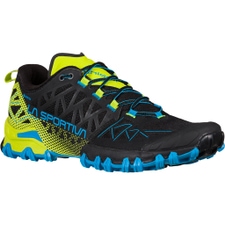 La SportivaBushido II GTX Running Shoes Black / Neon MenMSRP 199,95 €155,95 €Available Sizes:EU | UK | US | CM42,543,043,544,044,5
La SportivaBushido II GTX Running Shoes Black / Neon MenMSRP 199,95 €155,95 €Available Sizes:EU | UK | US | CM42,543,043,544,044,5
- - 23 %new
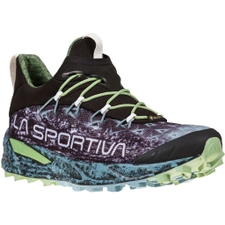 La SportivaTempesta GTX Running Shoes Black / Mist WomenMSRP 194,95 €149,95 €Available Sizes:EU | UK | US | CM38,038,539,039,540,0
La SportivaTempesta GTX Running Shoes Black / Mist WomenMSRP 194,95 €149,95 €Available Sizes:EU | UK | US | CM38,038,539,039,540,0
- - 43 %
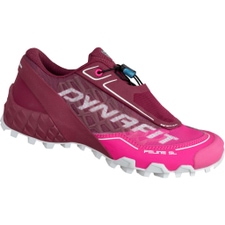 DynafitFeline SL Running Shoes Beet Red / Pink Glo WomenMSRP 139,95 €79,90 €Available Sizes:EU | UK | US | CM5,0
DynafitFeline SL Running Shoes Beet Red / Pink Glo WomenMSRP 139,95 €79,90 €Available Sizes:EU | UK | US | CM5,0 - - 10 %new
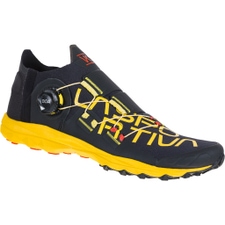 La SportivaVK Boa Running Shoes Black / Yellow MenMSRP 169,95 €152,95 €Available Sizes:EU | UK | US | CM42,543,043,544,044,5
La SportivaVK Boa Running Shoes Black / Yellow MenMSRP 169,95 €152,95 €Available Sizes:EU | UK | US | CM42,543,043,544,044,5
- - 23 %
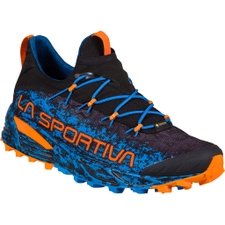 La SportivaTempesta GTX Running Shoes Electric Blue / Tiger MenMSRP 194,95 €149,95 €Available Sizes:EU | UK | US | CM42,543,043,545,045,5
La SportivaTempesta GTX Running Shoes Electric Blue / Tiger MenMSRP 194,95 €149,95 €Available Sizes:EU | UK | US | CM42,543,043,545,045,5
- - 31 %
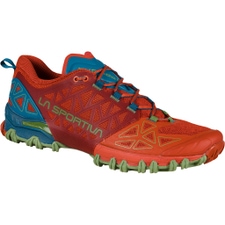 La SportivaBushido II Running Shoes Saffron / Kale MenMSRP 174,95 €119,95 €Available Sizes:EU | UK | US | CM41,545,547,0
La SportivaBushido II Running Shoes Saffron / Kale MenMSRP 174,95 €119,95 €Available Sizes:EU | UK | US | CM41,545,547,0
- - 50 %
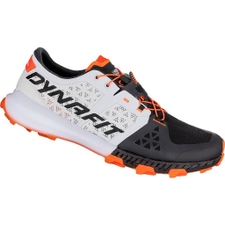 DynafitSky DNA Running Shoes Orange / Black Out MenMSRP 199,95 €99,95 €Available Sizes:EU | UK | US | CM10,511,011,513,0
DynafitSky DNA Running Shoes Orange / Black Out MenMSRP 199,95 €99,95 €Available Sizes:EU | UK | US | CM10,511,011,513,0 - - 37 %
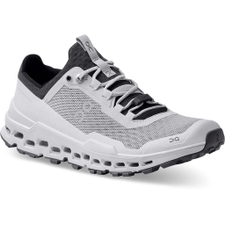 ONCloudultra Running Shoes Glacier / Frost WomenMSRP 189,95 €119,95 €Available Sizes:EU | UK | US | CM6,06,57,08,08,5
ONCloudultra Running Shoes Glacier / Frost WomenMSRP 189,95 €119,95 €Available Sizes:EU | UK | US | CM6,06,57,08,08,5
- - 17 %new
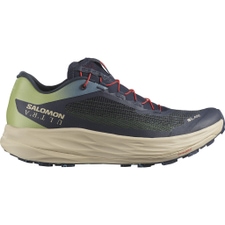 Ultra Running Shoes Sage / Cameo Blue / Night Sky
Ultra Running Shoes Sage / Cameo Blue / Night Sky MSRP 239,95 €199,95 €Available Sizes:EU | UK | US | CM6,06,57,07,58,0
MSRP 239,95 €199,95 €Available Sizes:EU | UK | US | CM6,06,57,07,58,0 - - 21 %
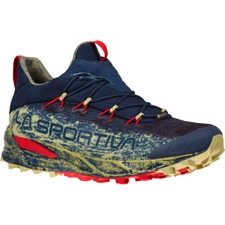 La SportivaTempesta GTX Running Shoes Night Blue / Cedar MenMSRP 188,95 €149,95 €Available Sizes:EU | UK | US | CM45,546,046,5
La SportivaTempesta GTX Running Shoes Night Blue / Cedar MenMSRP 188,95 €149,95 €Available Sizes:EU | UK | US | CM45,546,046,5
- - 33 %
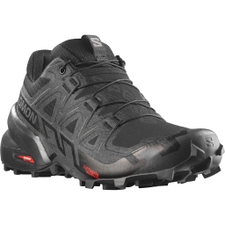 SalomonSpeedcross 6 Running Shoes Black / Phantom WomenMSRP 149,95 €99,95 €Available Sizes:EU | UK | US | CM5,0
SalomonSpeedcross 6 Running Shoes Black / Phantom WomenMSRP 149,95 €99,95 €Available Sizes:EU | UK | US | CM5,0 - - 29 %
 SalomonSpeedcross 6 GTX Running Shoes Black / Phantom WomenMSRP 169,95 €119,95 €Available Sizes:EU | UK | US | CM4,55,08,0
SalomonSpeedcross 6 GTX Running Shoes Black / Phantom WomenMSRP 169,95 €119,95 €Available Sizes:EU | UK | US | CM4,55,08,0 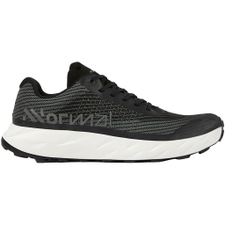 NNormalKjerag Running Shoes Black189,95 €Available Sizes:EU | UK | US | CM7,010,5
NNormalKjerag Running Shoes Black189,95 €Available Sizes:EU | UK | US | CM7,010,5- - 10 %new
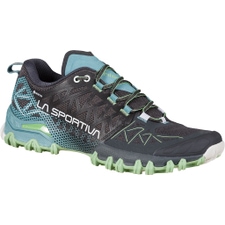 La SportivaBushido II GTX Running Shoes Carbon / Mist WomenMSRP 199,95 €179,95 €Available Sizes:EU | UK | US | CM38,539,039,540,040,5
La SportivaBushido II GTX Running Shoes Carbon / Mist WomenMSRP 199,95 €179,95 €Available Sizes:EU | UK | US | CM38,539,039,540,040,5
- - 24 %new
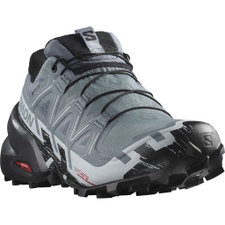 SalomonSpeedcross 6 GTX Running Shoes Flint Stone / Black / Heather WomenMSRP 169,95 €129,95 €Available Sizes:EU | UK | US | CM4,55,05,56,06,5
SalomonSpeedcross 6 GTX Running Shoes Flint Stone / Black / Heather WomenMSRP 169,95 €129,95 €Available Sizes:EU | UK | US | CM4,55,05,56,06,5 - - 24 %new
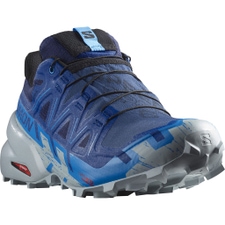 SalomonSpeedcross 6 GTX Running Shoes Blue Print / Ibiza Blue / Quarry MenMSRP 169,95 €129,95 €Available Sizes:EU | UK | US | CM8,08,59,09,510,0
SalomonSpeedcross 6 GTX Running Shoes Blue Print / Ibiza Blue / Quarry MenMSRP 169,95 €129,95 €Available Sizes:EU | UK | US | CM8,08,59,09,510,0 - - 50 %
 SalomonPulsar Trail Running Shoes Lunar Rock / Black / Dazzling Blue MenMSRP 149,95 €74,95 €Available Sizes:EU | UK | US | CM12,5
SalomonPulsar Trail Running Shoes Lunar Rock / Black / Dazzling Blue MenMSRP 149,95 €74,95 €Available Sizes:EU | UK | US | CM12,5 - - 47 %
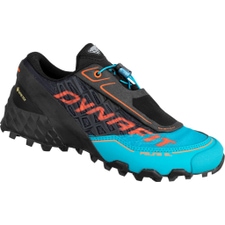 DynafitFeline SL GTX Running Shoes Black Out / Ocean WomenMSRP 169,95 €89,90 €Available Sizes:EU | UK | US | CM4,55,0
DynafitFeline SL GTX Running Shoes Black Out / Ocean WomenMSRP 169,95 €89,90 €Available Sizes:EU | UK | US | CM4,55,0 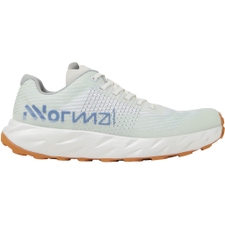 NNormalKjerag Running Shoes LT / Pastel Green189,95 €Available Sizes:EU | UK | US | CM7,59,09,510,010,5
NNormalKjerag Running Shoes LT / Pastel Green189,95 €Available Sizes:EU | UK | US | CM7,59,09,510,010,5- - 33 %
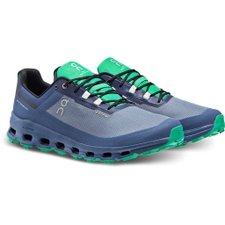 ONCloudvista Waterproof Running Shoes Metal / Denim MenMSRP 179,95 €119,95 €Available Sizes:EU | UK | US | CM8,08,5
ONCloudvista Waterproof Running Shoes Metal / Denim MenMSRP 179,95 €119,95 €Available Sizes:EU | UK | US | CM8,08,5
- - 30 %
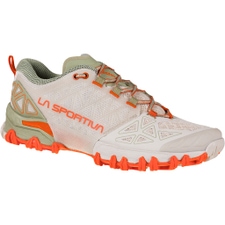 La SportivaBushido II Running Shoes Tea / Cherry Tomato WomenMSRP 184,95 €129,95 €Available Sizes:EU | UK | US | CM38,539,040,040,5
La SportivaBushido II Running Shoes Tea / Cherry Tomato WomenMSRP 184,95 €129,95 €Available Sizes:EU | UK | US | CM38,539,040,040,5
- - 24 %new
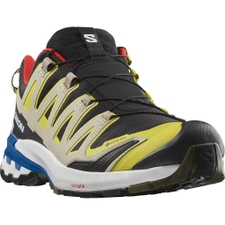 SalomonXA Pro 3D V9 GTX Running Shoes Black / Buttercup / Lapis Blue MenMSRP 169,95 €129,95 €Available Sizes:EU | UK | US | CM8,08,59,09,511,0
SalomonXA Pro 3D V9 GTX Running Shoes Black / Buttercup / Lapis Blue MenMSRP 169,95 €129,95 €Available Sizes:EU | UK | US | CM8,08,59,09,511,0 - - 33 %
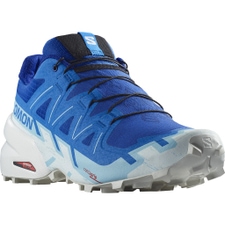 SalomonSpeedcross 6 Running Shoes Lapis Blue / Ibiza Blue / White MenMSRP 149,95 €99,95 €Available Sizes:EU | UK | US | CM9,510,5
SalomonSpeedcross 6 Running Shoes Lapis Blue / Ibiza Blue / White MenMSRP 149,95 €99,95 €Available Sizes:EU | UK | US | CM9,510,5 - - 23 %new
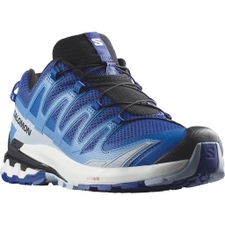 SalomonXA Pro 3D V9 Running Shoes Surf The Web / Ibiza Blue / White MenMSRP 149,95 €114,95 €Available Sizes:EU | UK | US | CM8,09,09,510,010,5
SalomonXA Pro 3D V9 Running Shoes Surf The Web / Ibiza Blue / White MenMSRP 149,95 €114,95 €Available Sizes:EU | UK | US | CM8,09,09,510,010,5 - - 10 %
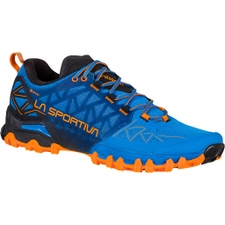 La SportivaBushido II GTX Running Shoes Electric Blue / Tiger MenMSRP 194,95 €175,45 €Available Sizes:EU | UK | US | CM42,545,0
La SportivaBushido II GTX Running Shoes Electric Blue / Tiger MenMSRP 194,95 €175,45 €Available Sizes:EU | UK | US | CM42,545,0
- - 45 %
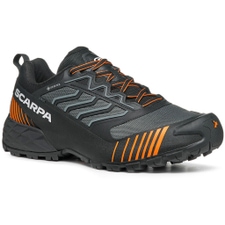 ScarpaRibelle Run XT GTX Running Shoes Anthracite / Tonic MenMSRP 219,95 €119,95 €Available Sizes:EU | UK | US | CM46,046,5
ScarpaRibelle Run XT GTX Running Shoes Anthracite / Tonic MenMSRP 219,95 €119,95 €Available Sizes:EU | UK | US | CM46,046,5 - - 32 %
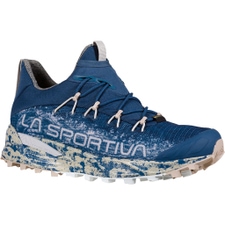 La SportivaTempesta GTX Running Shoes Denim / Taupe WomenMSRP 189,95 €129,95 €Available Sizes:EU | UK | US | CM36,037,538,038,539,0
La SportivaTempesta GTX Running Shoes Denim / Taupe WomenMSRP 189,95 €129,95 €Available Sizes:EU | UK | US | CM36,037,538,038,539,0
- - 10 %new
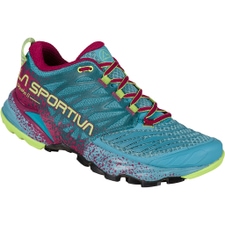 La SportivaAkasha II Running Shoes Topaz / Red Plum WomenMSRP 169,95 €152,95 €Available Sizes:EU | UK | US | CM38,539,039,540,040,5
La SportivaAkasha II Running Shoes Topaz / Red Plum WomenMSRP 169,95 €152,95 €Available Sizes:EU | UK | US | CM38,539,039,540,040,5
- - 25 %
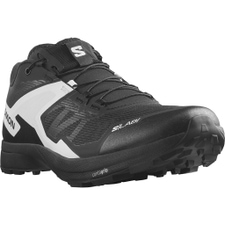 Alpine Running Shoes Black / White / Blue Danube Men
Alpine Running Shoes Black / White / Blue Danube Men MSRP 199,95 €149,95 €Available Sizes:EU | UK | US | CM8,59,09,510,010,5
MSRP 199,95 €149,95 €Available Sizes:EU | UK | US | CM8,59,09,510,010,5 - - 33 %
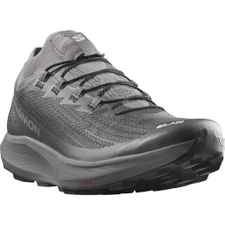 Pulsar 2 Soft Ground Running Shoes Quiet Shade / Magnet / Black Men
Pulsar 2 Soft Ground Running Shoes Quiet Shade / Magnet / Black Men MSRP 179,95 €119,95 €Available Sizes:EU | UK | US | CM7,58,08,510,010,5
MSRP 179,95 €119,95 €Available Sizes:EU | UK | US | CM7,58,08,510,010,5 - - 24 %new
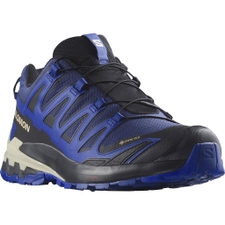 SalomonXA Pro 3D V9 GTX Running Shoes Blue Print / Surf The Web / Lapis Blue MenMSRP 169,95 €129,95 €Available Sizes:EU | UK | US | CM8,08,59,09,510,0
SalomonXA Pro 3D V9 GTX Running Shoes Blue Print / Surf The Web / Lapis Blue MenMSRP 169,95 €129,95 €Available Sizes:EU | UK | US | CM8,08,59,09,510,0 - - 47 %
 ScarpaRibelle Run XT Running Shoes Gray / Tonic MenMSRP 189,95 €99,95 €Available Sizes:EU | UK | US | CM45,546,0
ScarpaRibelle Run XT Running Shoes Gray / Tonic MenMSRP 189,95 €99,95 €Available Sizes:EU | UK | US | CM45,546,0 - - 37 %
 ONCloudultra Running Shoes Rhubarb/ Ray WomenMSRP 189,95 €119,95 €Available Sizes:EU | UK | US | CM6,0
ONCloudultra Running Shoes Rhubarb/ Ray WomenMSRP 189,95 €119,95 €Available Sizes:EU | UK | US | CM6,0
- - 35 %
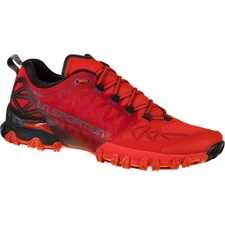 La SportivaBushido II GTX Running Shoes Sunset / Black MenMSRP 199,95 €129,95 €Available Sizes:EU | UK | US | CM42,543,043,544,545,0
La SportivaBushido II GTX Running Shoes Sunset / Black MenMSRP 199,95 €129,95 €Available Sizes:EU | UK | US | CM42,543,043,544,545,0
- - 15 %new
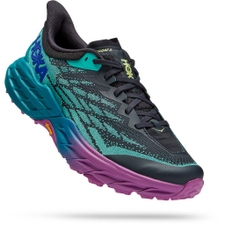 HokaSpeedgoat 5 Running Shoes Blue Graphite / Kayaking MenMSRP 159,95 €135,95 €Available Sizes:EU | UK | US | CM9,010,010,511,011,5
HokaSpeedgoat 5 Running Shoes Blue Graphite / Kayaking MenMSRP 159,95 €135,95 €Available Sizes:EU | UK | US | CM9,010,010,511,011,5 - - 29 %
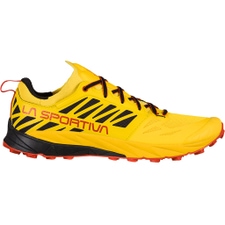 La SportivaKaptiva Running Shoes Yellow / Black MenMSRP 169,95 €119,95 €Available Sizes:EU | UK | US | CM44,546,5
La SportivaKaptiva Running Shoes Yellow / Black MenMSRP 169,95 €119,95 €Available Sizes:EU | UK | US | CM44,546,5
- - 35 %
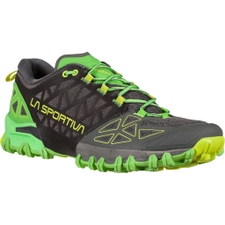 La SportivaBushido II Running Shoes Metal / Flash Green MenMSRP 184,95 €119,95 €Available Sizes:EU | UK | US | CM43,045,5
La SportivaBushido II Running Shoes Metal / Flash Green MenMSRP 184,95 €119,95 €Available Sizes:EU | UK | US | CM43,045,5
- - 38 %new
 New BalanceFresh Foam X Hierro V7 Running Shoes Black MenMSRP 159,95 €99,95 €Available Sizes:EU | UK | US | CM8,59,09,510,010,5
New BalanceFresh Foam X Hierro V7 Running Shoes Black MenMSRP 159,95 €99,95 €Available Sizes:EU | UK | US | CM8,59,09,510,010,5 - - 41 %
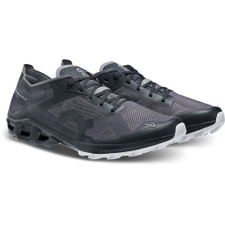 ONCloudventure Peak 3 Running Shoes Black / Glacier MenMSRP 169,95 €99,95 €Available Sizes:EU | UK | US | CM8,512,5
ONCloudventure Peak 3 Running Shoes Black / Glacier MenMSRP 169,95 €99,95 €Available Sizes:EU | UK | US | CM8,512,5
- - 15 %new
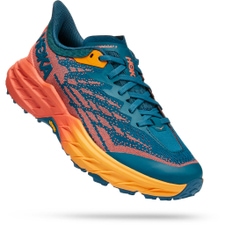 HokaSpeedgoat 5 Running Shoes Blue Coral / Camellia WomenMSRP 159,95 €135,95 €Available Sizes:EU | UK | US | CM7,08,08,59,09,5
HokaSpeedgoat 5 Running Shoes Blue Coral / Camellia WomenMSRP 159,95 €135,95 €Available Sizes:EU | UK | US | CM7,08,08,59,09,5 - - 23 %new
 SalomonXA Pro 3D V9 Running Shoes Quiet Shade / Lily Pad / Blue Haze WomenMSRP 149,95 €114,95 €Available Sizes:EU | UK | US | CM4,55,05,56,06,5
SalomonXA Pro 3D V9 Running Shoes Quiet Shade / Lily Pad / Blue Haze WomenMSRP 149,95 €114,95 €Available Sizes:EU | UK | US | CM4,55,05,56,06,5 - - 23 %new
 SalomonXA Pro 3D V9 Running Shoes Black / Phantom / Pewter MenMSRP 149,95 €114,95 €Available Sizes:EU | UK | US | CM8,08,59,09,510,0
SalomonXA Pro 3D V9 Running Shoes Black / Phantom / Pewter MenMSRP 149,95 €114,95 €Available Sizes:EU | UK | US | CM8,08,59,09,510,0 - - 15 %new
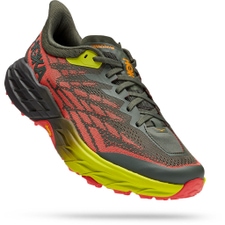 HokaSpeedgoat 5 Running Shoes Thyme / Fiesta MenMSRP 159,95 €135,95 €Available Sizes:EU | UK | US | CM9,09,510,010,511,0
HokaSpeedgoat 5 Running Shoes Thyme / Fiesta MenMSRP 159,95 €135,95 €Available Sizes:EU | UK | US | CM9,09,510,010,511,0 - - 32 %
 DynafitUltra 50 GTX Running Shoes Winter Moss / Black Out MenMSRP 189,95 €129,95 €Available Sizes:EU | UK | US | CM10,011,011,5
DynafitUltra 50 GTX Running Shoes Winter Moss / Black Out MenMSRP 189,95 €129,95 €Available Sizes:EU | UK | US | CM10,011,011,5 - - 15 %new
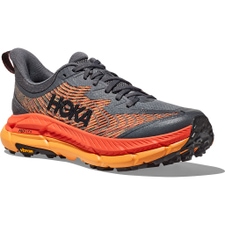 HokaMafate Speed 4 Running Shoes Castlerock / Black MenMSRP 179,95 €152,95 €Available Sizes:EU | UK | US | CM10,012,012,5
HokaMafate Speed 4 Running Shoes Castlerock / Black MenMSRP 179,95 €152,95 €Available Sizes:EU | UK | US | CM10,012,012,5
- - 37 %
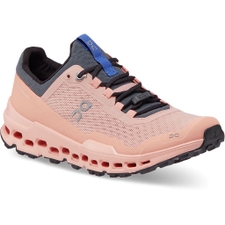 ONCloudultra Running Shoes Rose / Cobalt WomenMSRP 189,95 €119,95 €Available Sizes:EU | UK | US | CM6,57,08,08,59,0
ONCloudultra Running Shoes Rose / Cobalt WomenMSRP 189,95 €119,95 €Available Sizes:EU | UK | US | CM6,57,08,08,59,0
- - 33 %
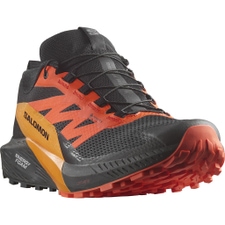 SalomonSense Ride 5 GTX Running Shoes Black / Scarlet Ibis / Turmeric MenMSRP 149,95 €99,95 €Available Sizes:EU | UK | US | CM8,0
SalomonSense Ride 5 GTX Running Shoes Black / Scarlet Ibis / Turmeric MenMSRP 149,95 €99,95 €Available Sizes:EU | UK | US | CM8,0 - - 22 %
 Pulsar 2 Running Shoes Fiery Red / Fiery Red / White Men
Pulsar 2 Running Shoes Fiery Red / Fiery Red / White Men MSRP 179,95 €139,95 €Available Sizes:EU | UK | US | CM8,09,511,011,5
MSRP 179,95 €139,95 €Available Sizes:EU | UK | US | CM8,09,511,011,5 - - 35 %
 ScarpaRibelle Run GTX Running Shoes Blue / Spicy Orange MenMSRP 199,95 €129,95 €Available Sizes:EU | UK | US | CM45,046,5
ScarpaRibelle Run GTX Running Shoes Blue / Spicy Orange MenMSRP 199,95 €129,95 €Available Sizes:EU | UK | US | CM45,046,5 - - 38 %
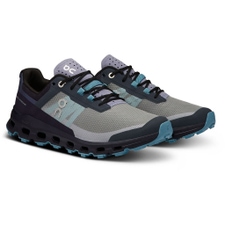 ONCloudvista Running Shoes Navy / Wash WomenMSRP 159,95 €99,95 €Available Sizes:EU | UK | US | CM6,0
ONCloudvista Running Shoes Navy / Wash WomenMSRP 159,95 €99,95 €Available Sizes:EU | UK | US | CM6,0
- - 10 %new
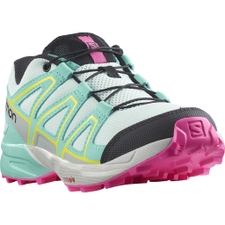 SalomonSpeedcross Running Shoes Bleached Aqua / Blue Radiance / Lunar Rock KidsMSRP 74,95 €67,45 €Available Sizes:EU | UK | US | CM32,033,034,035,036,0
SalomonSpeedcross Running Shoes Bleached Aqua / Blue Radiance / Lunar Rock KidsMSRP 74,95 €67,45 €Available Sizes:EU | UK | US | CM32,033,034,035,036,0 - - 38 %new
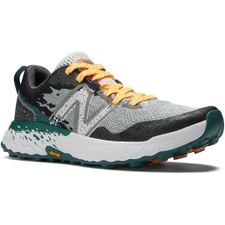 New BalanceFresh Foam X Hierro V7 Running Shoes Concrete MenMSRP 159,95 €99,95 €Available Sizes:EU | UK | US | CM8,59,09,510,010,5
New BalanceFresh Foam X Hierro V7 Running Shoes Concrete MenMSRP 159,95 €99,95 €Available Sizes:EU | UK | US | CM8,59,09,510,010,5 - - 10 %new
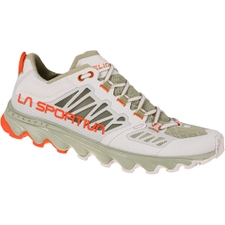 La SportivaHelios III Running Shoes Tea / Cherry Tomato WomenMSRP 149,95 €134,95 €Available Sizes:EU | UK | US | CM38,038,539,039,540,0
La SportivaHelios III Running Shoes Tea / Cherry Tomato WomenMSRP 149,95 €134,95 €Available Sizes:EU | UK | US | CM38,038,539,039,540,0
- - 33 %
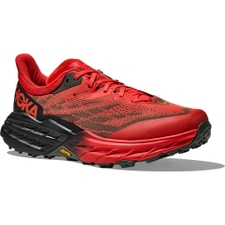 HokaSpeedgoat 5 GTX Running Shoes Fiesta / Thyme MenMSRP 179,95 €119,95 €Available Sizes:EU | UK | US | CM11,5
HokaSpeedgoat 5 GTX Running Shoes Fiesta / Thyme MenMSRP 179,95 €119,95 €Available Sizes:EU | UK | US | CM11,5 - - 47 %
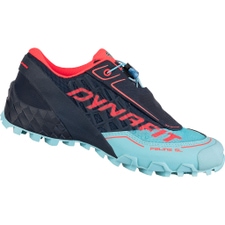 DynafitFeline SL Running Shoes Marine Blue / Blueberry WomenMSRP 149,95 €79,90 €Available Sizes:EU | UK | US | CM5,05,5
DynafitFeline SL Running Shoes Marine Blue / Blueberry WomenMSRP 149,95 €79,90 €Available Sizes:EU | UK | US | CM5,05,5 - - 67 %
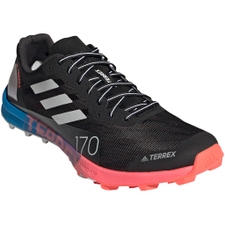 Adidas TerrexSpeed Pro Running Shoes Black WomenMSRP 149,95 €50,00 €Available Sizes:EU | UK | US | CM5,5
Adidas TerrexSpeed Pro Running Shoes Black WomenMSRP 149,95 €50,00 €Available Sizes:EU | UK | US | CM5,5



To many, trailrunning is the supreme discipline of running: Crisscrossing, over scree and through streams, over steep slopes and high up peaks. But trail running can also be something else: it is running on the flat forest path or along the local river. Nevertheless, trail running shoes need to be a lot more agile and lighter than hiking shoes, but more stable than normal running shoes. When choosing your shoes, it is important to consider features such as cushioning, foot support, stability, sole, profile of the sole and outer material - trail running shoes differ enormously here. To provide you with the best possible assistance in this complex search, we have created the Sport Conrad shoe configurator for you, with which you are guaranteed to be on the right track when choosing your next trail shoes!
What is a trail running shoe?
Whether in high alpine terrain or on the flat, in the field or in the woods, all trail running shoes have certain features that set them apart from regular running shoes:
Outsole and profile of the sole
They must provide good grip on uneven terrain, in both dry and wet conditions. The profile must also help maximize profile-sole-foot-leg power transfer. Therefore, lugs, grooves or cleats provide a deep, coarse tread.
Midsole
The midsole provides stability; it is stiffer than a standard running shoe and therefore twists less. The torsional rigidity of the trail shoe gives the foot guidance and support, especially when the ground is rocky. The midsole provides additional protection against sharp stones and the like. Under the heel, the sole is cut slightly wider to protect the runner from unintentional twisting. In addition, the center of gravity is lower than in normal running shoes, so that the ground contact is more direct and increases stability.
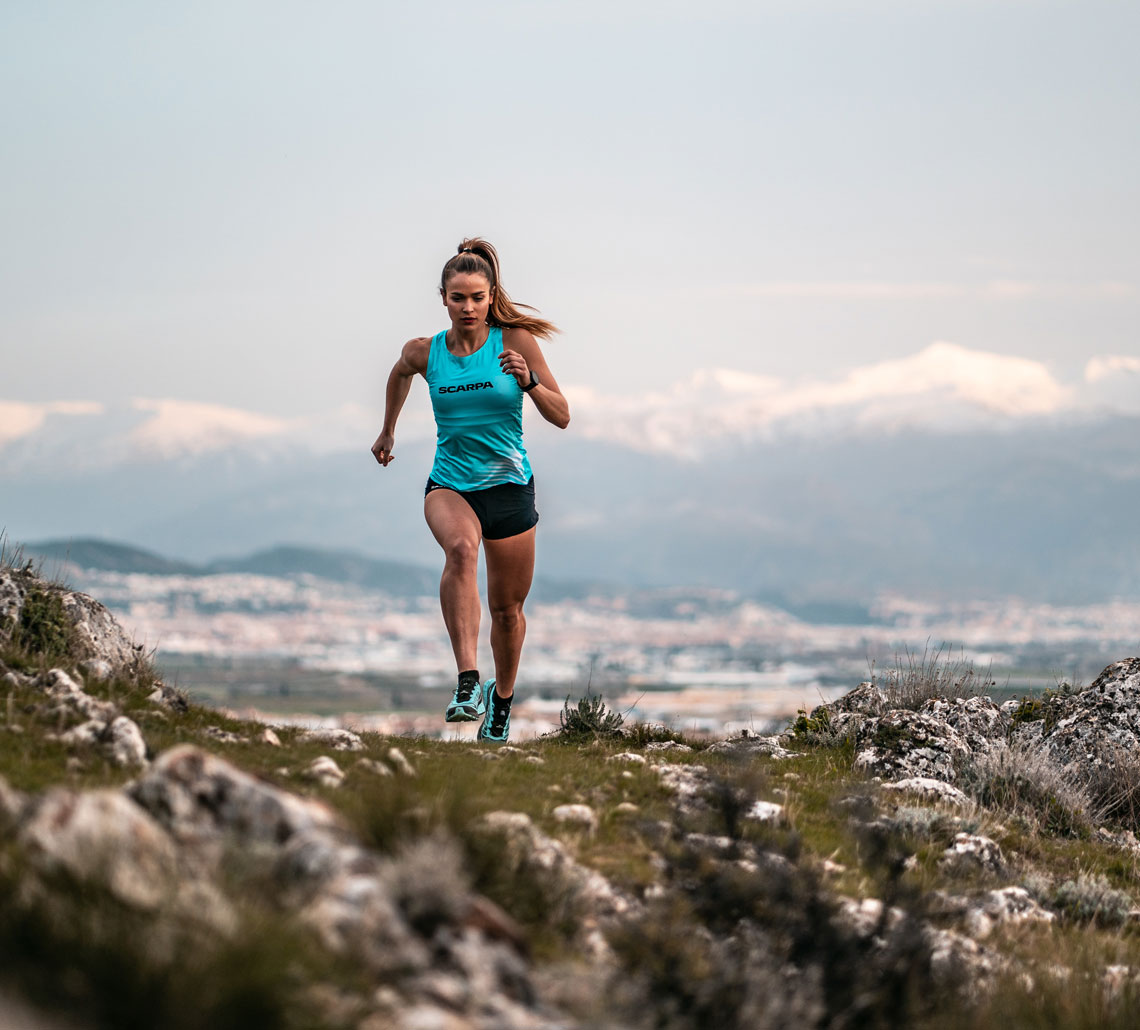
Into the wild
Cushioning
Some people are probably surprised to learn that trail running shoes often have less cushioning than road running shoes. This is because the ground in the terrain is softer than road asphalt, so less cushioning is needed. However, exceptions prove the rule here as well: those who run on very long trails or even ultra trails usually prefer more cushioning to reduce the stress on their feet.
Drop
What is the drop? Drop refers to the difference in height of the shoe between the heel and forefoot. Typically, running shoes have a raised heel to protect the foot and calves from overloading. In trail running shoes, the drop is often rather lower, because otherwise the surefootedness suffers - with a lower drop you are closer to the ground, which is especially important on difficult terrain.
Outer material
One feature that often immediately catches the eye is the outer material. Since trail shoes get a lot more wear and tear than regular running shoes, they also need to be sturdier to protect your foot from rocks, thorns, or other sharp things. Often trail shoes have a sturdy toe cap, which is made of impact-resistant plastic and offers more protection. When it comes to the outer material, you also need to distinguish whether you need breathable shoes, or even waterproof shoes made of Gore-Tex.
How to find the right trail running shoe
What kind of terrain do you run?
Depending on what trails you're running on, you should look for your perfect shoe. For example, there are all-rounders with which you can run on asphalt for a while before your trail begins. Because most run according to the motto "From door to trail", and there are still some miles to be covered on the road. Accordingly, it needs a little more cushioning and less profile here. Those who are already running at an advanced level on unpaved trails in the mountains also need a particularly stable shoe. But less cushioning, because that would be rather counterproductive in this case.
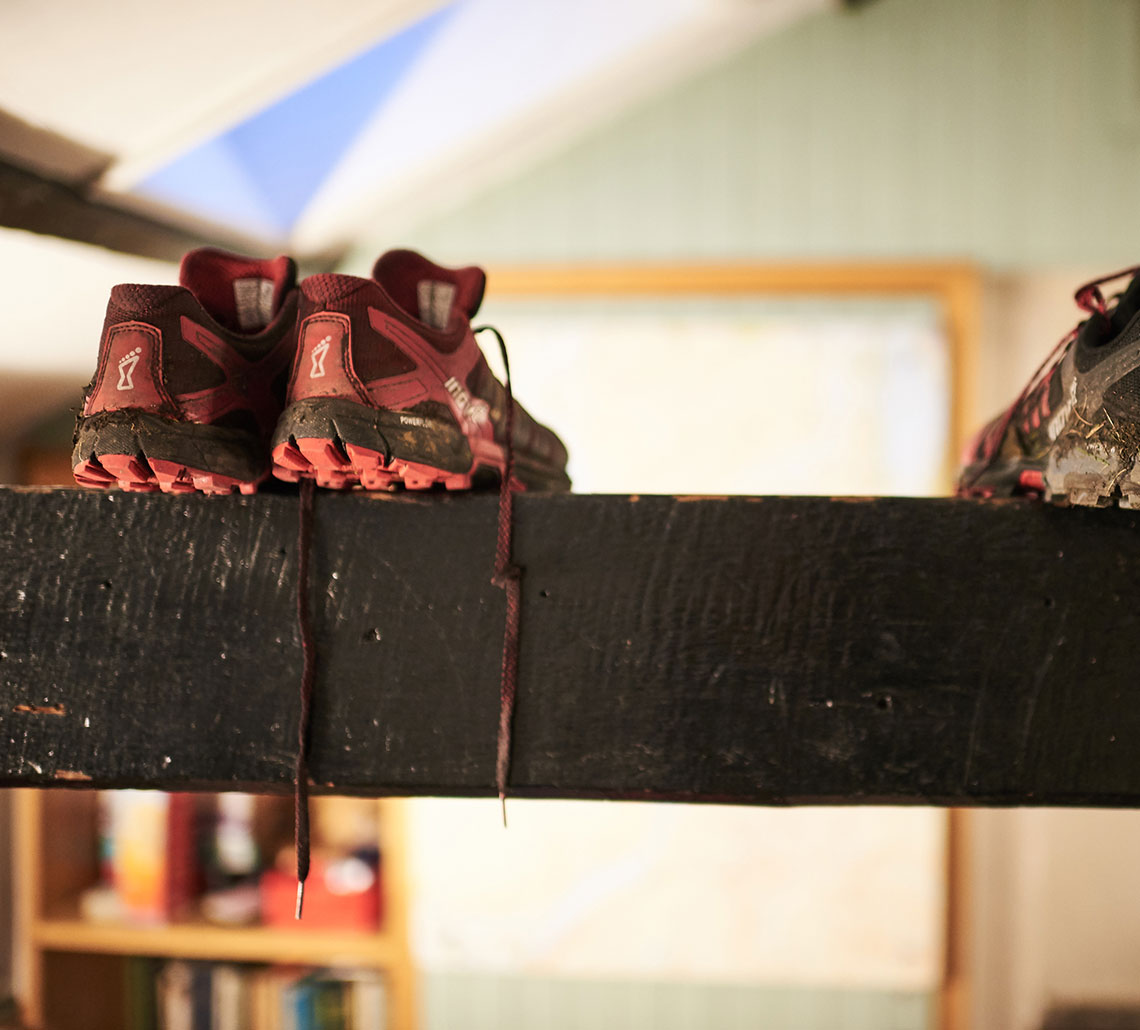
Our Shoe Configurator helps you choose your shoe
Soft ground: Is soft ground your favorite terrain, for example in forests? You don't mind muddy ground either? Then you should definitely opt for a sole with a lot of grip, i.e. with a pronounced tread. It is also important that you stand stable and firm in the shoes, otherwise you easily lose your balance and slip away. Cushioning is less important here.
Steep and rocky: You like peaks and steep slopes? Look for a reinforced toe cap and scree protection. You need a stable shoe with a firm sole with less cushioning.
Winter trails: You don't care if there's snow, you want to get on your trails? Then your shoe should be waterproof - some shoes even have integrated gaiters. The sole should be equipped with spikes. You can also get grödels that fit your trail running shoes, such as the Nortec Trail Grödel.
What distances do you run?
You can run as far and as long as you want and of course shoes are always a matter of taste. But depending on the distance you can pay attention to different features of the trail models.
Short distances (up to 15 km): For such distances you don't need the high-end shoe with super cushioning. You need a comfortable, lightweight shoe that offers you optimal power transmission and is particularly reactive.
Medium distances (up to 40 km): The shoe should be stable and support your foot optimally. However, the firmer and more stable, the heavier. All-round models can do a good job here.
Long or ultra distances (over 40 km): If you are looking for a challenge in very long distances or even ultra trails, you want a trail running shoe that is as light as possible, but stable and well cushioned with a good profile.

Trails: just you and the nature
What is your goal?
In the end, it all depends on what you want. Ask yourself how ambitious your goals are, whether you want to run for speed or just enjoy the trail experience in nature. Maybe you want to compete or just run for yourself? Do you want to run regularly or just once in a while? To help you decide, just use our shoe configurator.
Fit and lacing of your trail running shoe
The most important thing is that your shoe fits you. After all, there are wider or narrower feet, higher or lower ankles and so on. It is especially important that the toes have enough space. Because trail running is a lot of downhill. Also, the shoe should not be too tight and not too wide, because both can lead to pain and blisters. Your instep should be firmly enclosed. In addition, you must remember that on longer runs the feet swell a little, which is why you should always buy running shoes slightly larger than your regular size.
There are also different lacing systems for trail running shoes. Many trail shoes have thin, fixed laces and a way to stow the ends in a small pocket or similar so you can't trip over them. But there are also quick lacing systems, such as Quicklace or Boa, there your shoes are laced in no time - and without laces. But the most important thing is that you can lace and adjust the shoes so that they fit your foot exactly.
How to care for your trail running shoe
Sometimes your shoes will look wild, especially if you've been out on a nice muddy trail. But luckily, taking care of your footwear doesn't take much effort. All you have to do is wipe them down with warm water or brush them off right after your run.
If your shoes smell bad inside or are very sweaty, you can also wash the insole or the shoes - but please by hand! And even then only with a gentle detergent! Dry them best in the air (not in the direct sun or on the heater).
If you have impregnated shoes, you should renew the impregnation from time to time with a special (eco) spray.
Ready, Set, Go: Ready for your running adventure
In addition to the various characteristics and areas of use of trail running shoes, there are, of course, also one or two differences and some special features from manufacturer to manufacturer. However, no general statements can be made about which manufacturer is best suited for which runner - it all depends on your personal preferences. However, if you have already made good experiences with certain brands from your running experience, it is definitely recommended to take a closer look at the trail running shoes of these manufacturers.
In our store you will find shoes from brands like Dynafit, Hoka, La Sportiva, ON, Salomon and many more. When you finally get going, the rest of the outdoor equipment for the trail should of course not be missing, including the right breathable running clothes, jackets, pants, socks and possibly running backpacks and running poles and the right sports watch for training.
Read more about trail running
The ABC Of Trail Running Shoes: All You Need To Know
Trailrunning Essentials - What Equipment Do I Need And What Do I Need To Keep In Mind?
Urban Trailrunning: Your Outdoor Adventure In The City
Trailrunning Rule Book: What Is There To Know